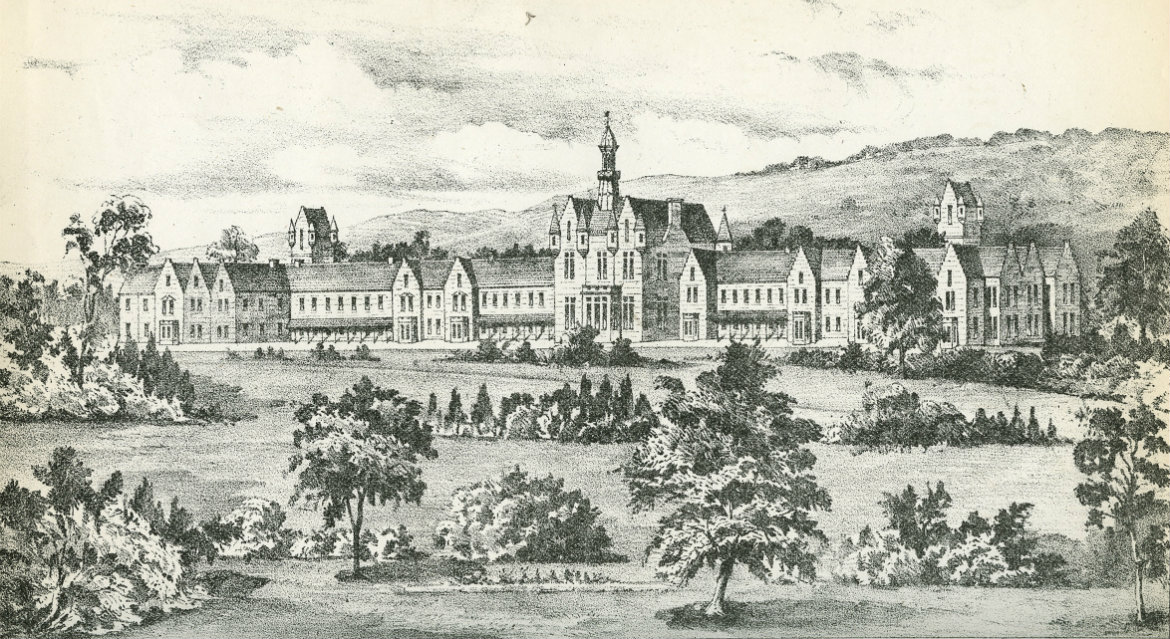Exhibition draws on asylum records to reconsider mental health today
Published On Wed 21 Mar 2018 by Grant Hill

The lives of a group of Scottish people certified as insane more than a century ago will help shine a light on today’s mental health issues in a new exhibition at the University of Dundee.
‘Face to Face: Stories from the Asylum’ looks at the lives of nine patients admitted to Dundee Royal Lunatic Asylum at the turn of the 20th century with diagnoses that appear unusual to modern eyes. It opens at the University’s Tower Foyer Gallery on Friday March 23.
Dundee’s Archives Services hold extensive records from the Asylum, and these have informed the exhibition, which is part of a wider project based at the University of St Andrews. ‘Promoting mental health through the lessons of history’ explores how mental disorders have been understood and treated over the past 500 years, and how a knowledge of these ideas can help us shape awareness of mental ill-health and its care today.
The project is led by Professor Rab Houston of St Andrews’ School of History, and the exhibition explains diagnoses, such as monomania and idiocy, and also more apparently familiar ones like dementia, which actually meant something completely different in Victorian times. Face to Face examines how conditions were understood, as well as setting the experiences of patients against the context of life in Dundee as they would have known it
Professor Houston said, “We hope the exhibition will prompt viewers to think about the continuities between the experiences of people in the past and in the present day, as well as the very different material environment in which they lived. It is about Dundee people, but it speaks for those with mental disorders anywhere in the world.”
Morag Allan Campbell, a PhD student of Professor Houston’s, researched the patients’ stories and designed the exhibition.
“The exhibition is not about the rights and wrongs of institutional care, or about the conditions in the asylum,” she said. “Neither is it about trying to judge how much psychiatry may have improved since then – it is about making connections between the stories of these patients and our own thoughts and experiences today.
“Our understanding of the Victorian lunatic asylum, and our perception of the history of psychiatry, is often fed by myth and fiction. The 19th century saw a massive rise in the building of asylums, as institutional care became the dominant means of caring for the insane, but we know little of the lives of those who entered them as patients and how they experienced mental illness.
“Times may have changed, but the ways in which these patients were vulnerable to life's stresses, strains and hardships were not so very different.”
The University of Dundee Archive Services houses the NHS Tayside archive and the Dundee asylum records. Using information and photographs from the patients’ case notes, the exhibition examines the circumstances which led to their committal to the asylum, the dilemmas faced by their families, and the nature of their mental illness.
University Archivist Caroline Brown said, “We are delighted to be involved in this project. The exhibition is a wonderful opportunity to give a voice to the people represented in our collections. In addition to the information on the boards, visitors will be able to have a look at some of the case books and records that contain these stories. Together, they make people from long ago come alive once more.”
Face to Face: Stories from the Asylum, will be on display in the Tower Foyer Gallery from March 23 until June 9, and will be accompanied by a number of events and activities. Admission is free.
More information is available at https://arts.st-andrews.ac.uk/facetoface/.
Notes to editors:
Dundee Royal Lunatic Asylum officially opened in April 1820, on a site to the north of the town.
The curative regime was based on the principles of ‘moral treatment’ pioneered by the Quaker Retreat at York, encouraging the individual to regain self-control and reason through kindness, nourishment and healthy activity.
In 1875, the asylum received a Royal Charter from Queen Victoria and became the Dundee Royal Lunatic Asylum.
In 1882, the asylum moved further west, to a new site at Westgreen Farm, near the parish of Liff and Benvie. The main asylum was sold to Dundee District Lunacy Board in 1903, and renamed the Dundee District Asylum.
The National Health Service took over control in 1948, and the buildings at Liff finally closed in 2013 following the opening of a psychiatric unit at Ninewells Hospital.
The records for Dundee Royal Lunatic Asylum are housed within the Tayside Health Board Records at University of Dundee Archives Services.
For media enquiries contact:
Grant Hill
Press Officer
University of Dundee
Nethergate, Dundee, DD1 4HN
Tel: +44 (0)1382 384768
Mobile: 07854 953277
Email: g.hill@dundee.ac.uk